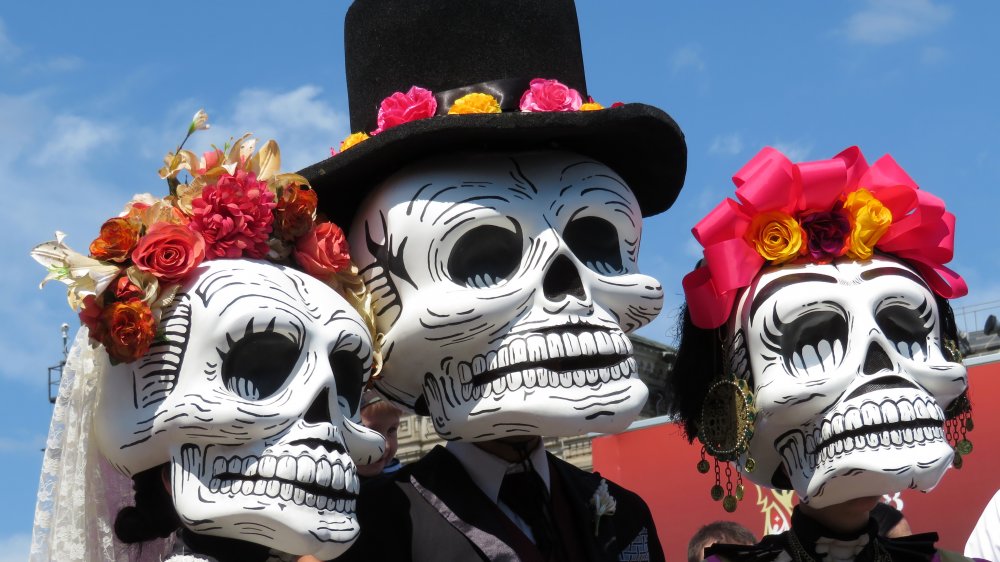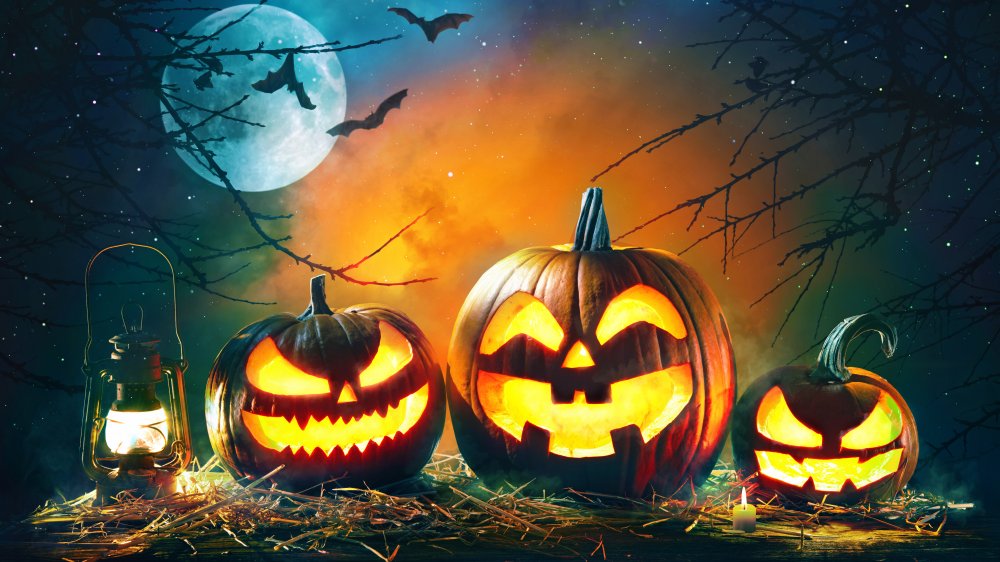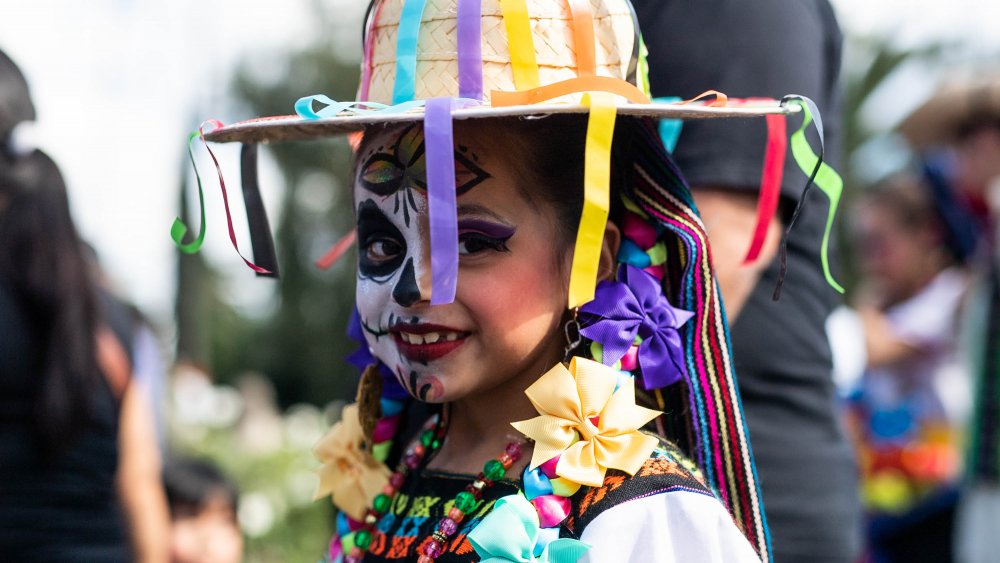What's The Difference Between Halloween And The Day Of The Dead
As the spooky season falls upon the world and spirits get restless with the thinning of the vale between realms, humans participate in their seasonal holidays and rituals. Colors turn from the bright greens of summer to the crisp orange and earthy browns of autumn. The days wane and the nights wax on their way toward winter. The harvest season is in full swing. As the leaves fall lazily to the ground, leaving the trees bare and haunting, the chilly wind howls through the empty branches. Nighttime has become a thing of goosebumps and phantom noises that raise our hair on end.
For some reason, we celebrate the season by scaring ourselves, and we do it on purpose, like a bunch of masochists. Horror films become a nightly ritual. We become unsure if the sounds we hear are a product of mundane life or of a newly acquired haunting. Sweets become a staple as tons of candy corn fills the world's trashcans. We gear up for parties to commemorate the two spookiest holidays of the year: Halloween and the Day of the Dead. A lot of people confuse these traditions, thinking they're basically the same holiday by two different names, and that couldn't be further from the truth. Although they both have sweets and skulls, they have notable differences as well.
Halloween is barely a spiritual tradition anymore
Halloween, also known as "All Hallows Eve," has very little spiritual tradition remaining in its mainstream iteration. According to Business Insider, the holiday was originally linked to the Celtic pagan celebration of Samhain, which was believed to be a point in time when the veil between worlds was at its thinnest, giving spirits an easier time traveling into the Earthly realm. Sweets were given out as offerings to appease these spirits, costumes were worn to confuse them, and bobbing for apples was a form of divination.
Over the centuries, All Hallows Eve was claimed by the Catholic Church, the evening before its observance of All Saints' Day. But for most, Halloween has become a day of fun and games — a chance to dress as your favorite characters, host parties, and for kids to coerce candy from the residents of entire neighborhoods. The holiday's mystic origins sometimes reminds us to face our fear of our own mortality — hence all of the zombies, skeletons, and frightful tricks. For the most part, Halloween has lost its connection to the spirit world and the afterlife. Unlike the Day of the Dead.
When the spirits walk the Earth
Dia de los Muertos, the Day of the Dead, is celebrated as part of a spiritual tradition in Mexico. Where Halloween is celebrated on All Hallows Eve, the Day of the Dead runs from October 31 through November 2, according to USA Today. It encompasses all three of the Catholic holidays that make up Allhallowtide: All Hallows Eve, All Saints' Day, and All Souls' Day.
One of the biggest differences between Halloween and the Day of the Dead goes far beyond the superficial and settles in the tone of the celebrations. Where Halloween uses death as a fearful element to its festivities, the Day of the Dead is about celebrating the memories of lost loved ones and, essentially, laughing at our own mortality. The skeleton decorations are often depicted as bright and dancing. The spirits of the deceased are returning for a short visit, not coming from the bowels of hell to drag us away. The people who celebrate the holiday decorate graves and leave offerings, often spending entire nights in the cemetery and making home altars dedicated to past friends and relatives.
For such a solemn holiday, Day of the Dead is a big laughing party. The streets are full of sweets, with the iconic sugar skulls readily available, reports History. The idea is to turn a mournful experience into a happy one. Both observances have their upsides. And candy.


